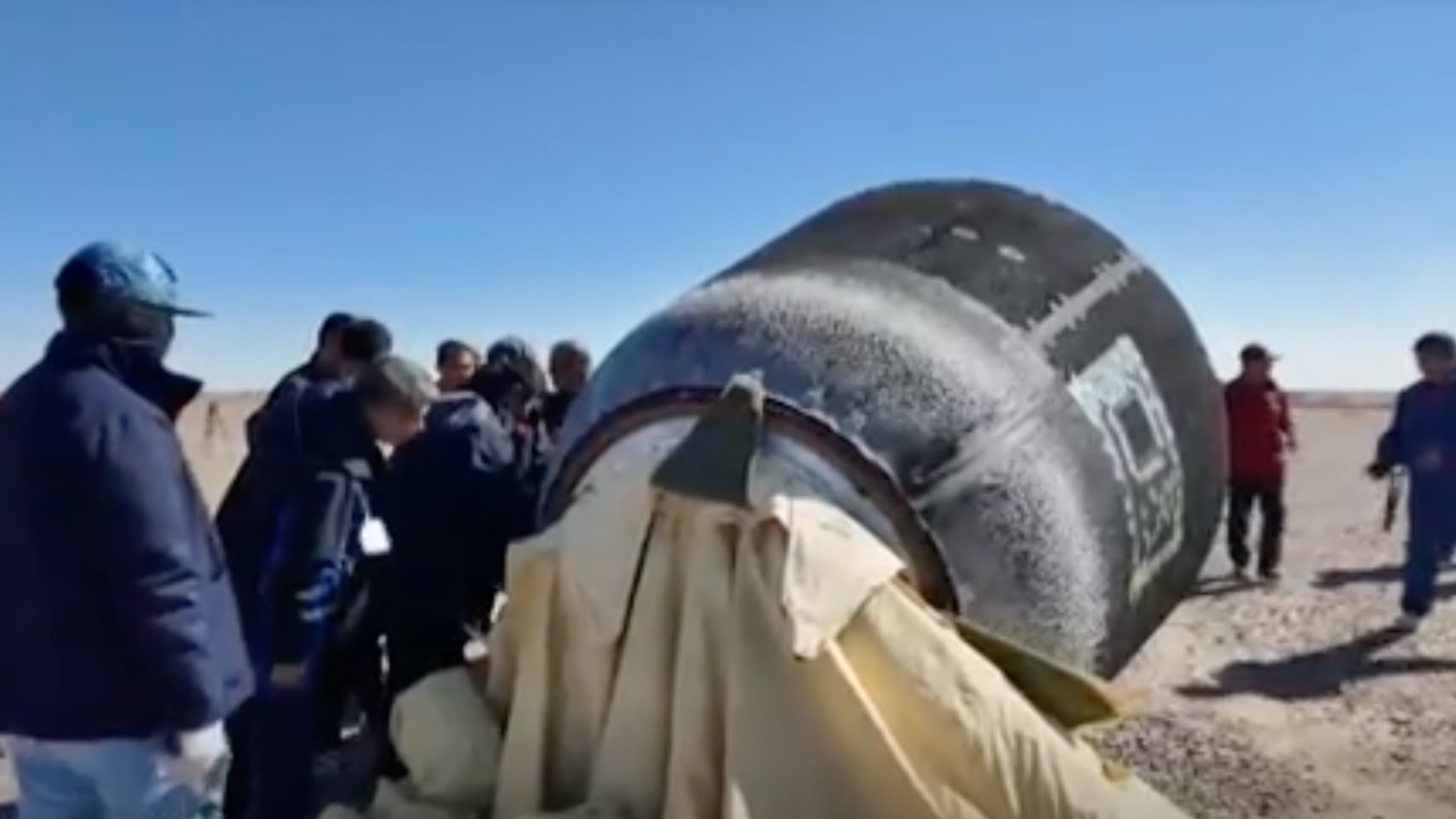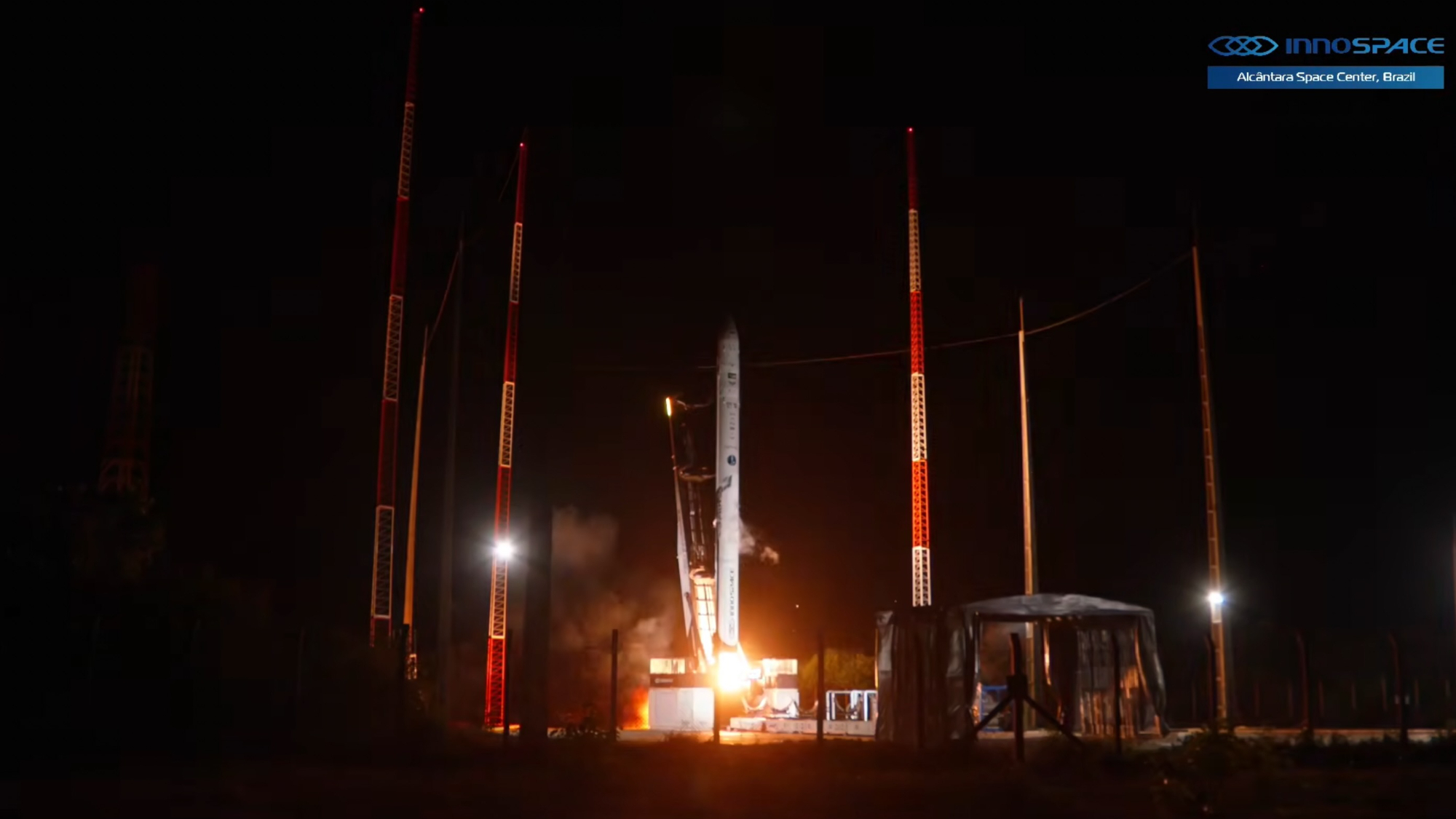Here's what China launched to orbit on its retrievable satellite last month (video)
There were lots of seeds and microbes.
China has revealed the payloads it sent to space recently on the two-week-long Shijian-19 retrievable satellite mission.
Shijian-19 launched on a Long March 2D rocket from Jiuquan Satellite Launch Center on Sept. 27 and landed Oct. 11 at the Dongfeng landing site, near Jiuquan in the Gobi Desert. It was the first mission for the spacecraft, which is partially reusable.
A mission payload handover ceremony was held by the China National Space Administration (CNSA) in Beijing on Thursday (Oct. 24) revealing the contents of the spacecraft.
The ceremony saw CNSA and the China Aerospace Science and Technology Corporation (CASC), which developed the reusable spacecraft, sign payload delivery certificates with domestic and international partners, including those from Thailand and Pakistan.
There were 20 categories of payloads, including staple crops, industrial crops, microbial space breeding specimens, electron components and space technology experiments.
Related: China has sent more than 100 types of seeds to its Tiangong space station
China has sent crop seeds to space on numerous occasions. The idea is that cosmic rays, normally blocked by Earth's atmosphere, can alter the seeds' genetic code. These mutations may induce beneficial changes, such as increased crop yields or resistance to drought or pests.
Breaking space news, the latest updates on rocket launches, skywatching events and more!
"After being carried into space, the seeds exhibit various mutations. We select only those with improved traits, obtaining new seed resources that can be crossed with our existing varieties," Liu Luxiang, executive director general of the Institute of Crop Sciences under the Chinese Academy of Agricultural Sciences, told China Central Television (CCTV). "This approach enhances the superior characteristics that our current varieties may lack, enabling us to accumulate these advantages and ultimately improve the overall quality of the crops."
A total of 20 kinds of payloads, including "space seeds" and multiple international payloads, from the Shijian-19, China's first reusable and returnable test satellite, were officially handed over to their users on Thursday. The #satellite, which returned to Earth on Oct 11, had… pic.twitter.com/zJdq7l4gPeOctober 24, 2024
Bian Zhigang, deputy head of CNSA, said that the Shijian-19 mission fully leverages the advantages of the next-generation retrievable space experiment platform, according to a CNSA statement.
Overall, the mission carried around 1,800 plant materials and more than 1,000 species of microorganisms, encompassing nearly all major kinds of agricultural products, according to CCTV.
"The payloads it carries are highly diverse, playing a crucial role in cultivating new seed varieties, supporting the innovation of genetic resources, advancing biomedicine and space science, and promoting international scientific cooperation in space," Meng Lingjie, director of the Earth Observation System and Data Center under CNSA, told CCTV.
China operates the Tiangong space station in low Earth orbit. However, it sends crews to the space station just every six months, aboard Shenzhou spacecraft that have little capability for returning experiments to Earth. The recoverable Shijian satellite allows opportunities for shorter-duration experiments in space and can carry around 1,100 pounds (500 kilograms) of payload, all of which can be recovered.

Andrew is a freelance space journalist with a focus on reporting on China's rapidly growing space sector. He began writing for Space.com in 2019 and writes for SpaceNews, IEEE Spectrum, National Geographic, Sky & Telescope, New Scientist and others. Andrew first caught the space bug when, as a youngster, he saw Voyager images of other worlds in our solar system for the first time. Away from space, Andrew enjoys trail running in the forests of Finland. You can follow him on Twitter @AJ_FI.

